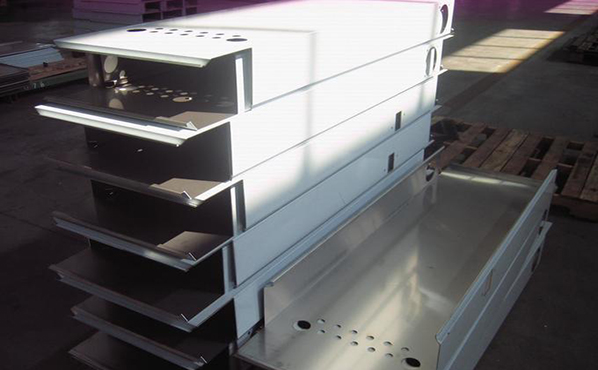Sheet metal processing technology continues to improve, especially in some applications such as precision stainless steel bending, stainless steel decorative parts bending, aluminum alloy bending, aircraft parts bending, copper plate bending, etc. In addition, the surface quality of the workpiece has also been improved. high demands. The traditional bending process is more likely to cause damage to the surface of the workpiece, and the surface in contact with the mold will form obvious dents or scratches, which will affect the aesthetics of the final product and reduce the user's judgment on the value of the product.

Causes of bending indentation
Sheet metal bending is a forming process in which sheet metal is elastically deformed under the pressure of the punch or die of the bending machine. Then the plastic bending stage begins, and the sheet can be bent freely. When bending, the sheet will be squeezed by the bending die and elastically deformed, and the contact point between the sheet and the die will slide as the bending process progresses. During the bending process, the sheet will go through two different stages of elastic deformation and plastic deformation. , three indentation lines will be formed. These indentation lines are usually the result of friction between the sheet and the shoulders of the V-groove of the concave die and are therefore called shoulder indentations.
Bending method
Since the shoulder indentation is related to the contact between the plate and the shoulder of the V-groove of the mold, during the bending process, the space between the punch and the die will affect the pressure of the plate, and the probability and magnitude of the indentation will be different. . Under the same V-groove condition, the larger the bending angle of the bending part, the greater the tensile deformation of the metal plate, and the larger the friction gap between the metal plate and the V-groove shoulder; The longer the pressure applied by the metal plate is maintained, the more pronounced the indentation caused by these two factors.

The structure of the V groove of the die
When bending sheets of different thicknesses, the width of the V-groove is selected differently. The larger the size of the V-groove of the die, the greater the width of the indentation, the smaller the friction between the plate and the shoulder of the V-groove of the die, and the depth of the indentation will naturally decrease.
The V groove of the die is isolated from the sheet
In terms of frictional contact, as long as the die and the sheet are separated, there is no friction. Therefore, without modifying the bending tool, the bending can be achieved by using a soft film so that there is no contact between the V-groove of the die and the sheet. The soft film is mainly used as a buffer between the workpiece and the shoulder of the mold to offset the pressure between the bending mold and the sheet, thereby preventing the workpiece from indentation during the bending process.
concluding remarks
The sheet metal processing industry is highly competitive, and companies that want to gain a foothold in the market must constantly strive for excellence in processing technology. Not only to realize the function of the product, but also to consider the craftsmanship and aesthetics of the product as well as the economics of processing, so that the product is easier to process, more economical and more beautiful by applying more efficient and economical processing methods.



